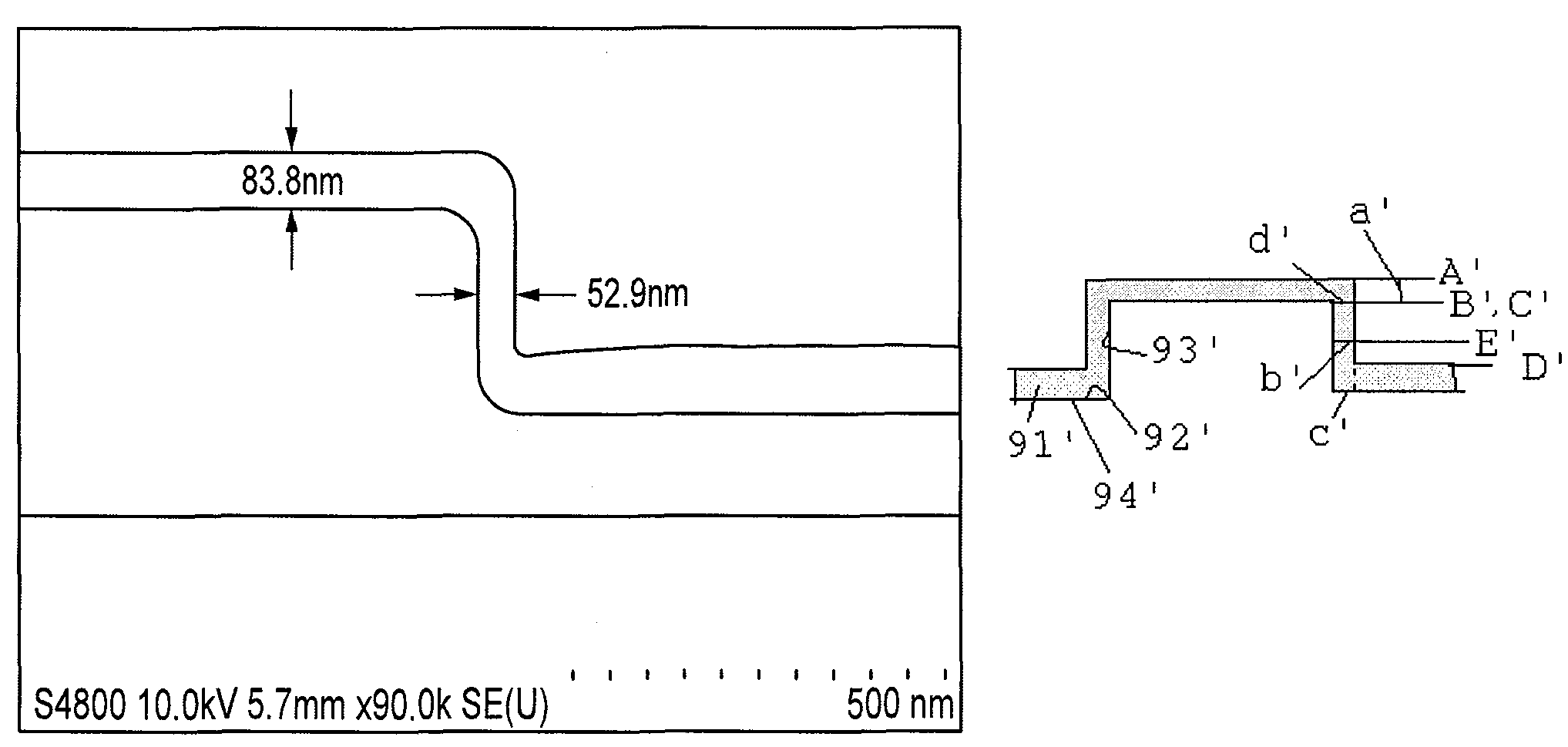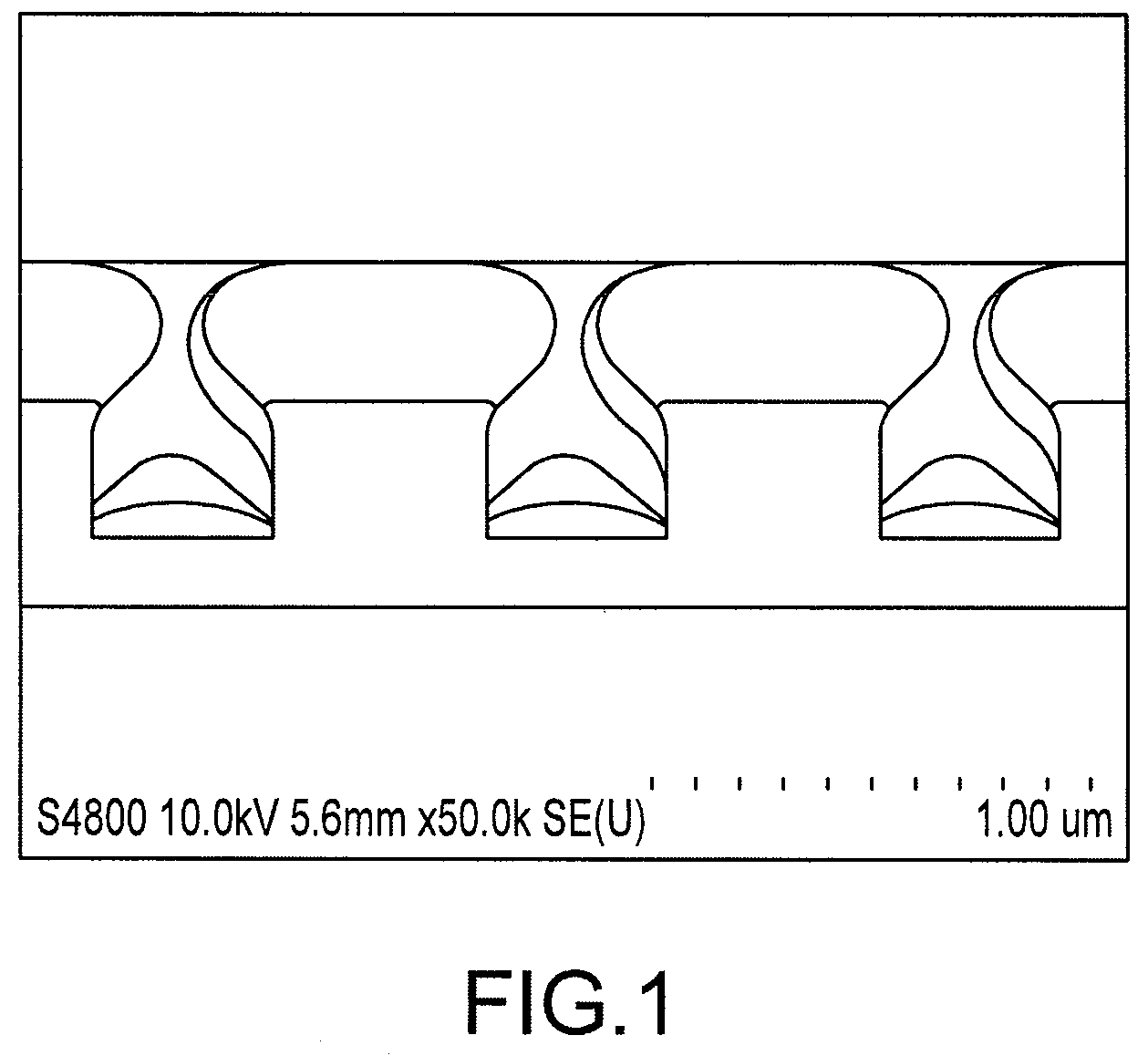Method of forming highly conformal amorphous carbon layer
a carbon layer, conformal technology, applied in the direction of coating, chemical vapor deposition coating, plasma technique, etc., can solve the problems of increasing difficulty in successful pattern transfer, insufficient thin resist layer to mask the underlying material layer, and increasing density, so as to achieve easy ionization and low risk of arcing
- Summary
- Abstract
- Description
- Claims
- Application Information
AI Technical Summary
Benefits of technology
Problems solved by technology
Method used
Image
Examples
example
Resist Pattern for Double Patterning
[0118]Another advantage of an conformal amorphous carbon deposition process is that a lower temperature process may be used as sacrificial layer on a resist pattern for double patterning technology.
[0119]For forming conformal amorphous carbon layer on a resist pattern, deposition conditions in embodiments may be as follows:
[0120]Isoprene: 10˜300 sccm (preferably 100˜120 sccm)
[0121]Argon: 0˜3000 sccm (preferably 400˜600 sccm)
[0122]Nitrogen: 0˜1000 sccm (preferably 400˜600 sccm)
[0123]Process helium: 3000 sccm
[0124]Sealed helium: 50 sccm
[0125]Carrier helium: 300 sccm
[0126]Substrate temperature: 0˜150° C. (preferably 0˜50° C.)
[0127]RF power: 0.02 W / cm2˜7 W / cm2 (including a range of 0.05˜5 W / cm2, and a range of 0.5˜3 W / cm2 in embodiments).
[0128]Pressure: 0.1˜10 Torr (preferably 5˜6 Torr)
[0129]Deposition time: 30 sec.
[0130]The obtained amorphous carbon film differ, depending on the process conditions, in an embodiments, shows a step coverage of more tha...
PUM
| Property | Measurement | Unit |
|---|---|---|
| temperature | aaaaa | aaaaa |
| RF power | aaaaa | aaaaa |
| height | aaaaa | aaaaa |
Abstract
Description
Claims
Application Information
 Login to View More
Login to View More - R&D
- Intellectual Property
- Life Sciences
- Materials
- Tech Scout
- Unparalleled Data Quality
- Higher Quality Content
- 60% Fewer Hallucinations
Browse by: Latest US Patents, China's latest patents, Technical Efficacy Thesaurus, Application Domain, Technology Topic, Popular Technical Reports.
© 2025 PatSnap. All rights reserved.Legal|Privacy policy|Modern Slavery Act Transparency Statement|Sitemap|About US| Contact US: help@patsnap.com



